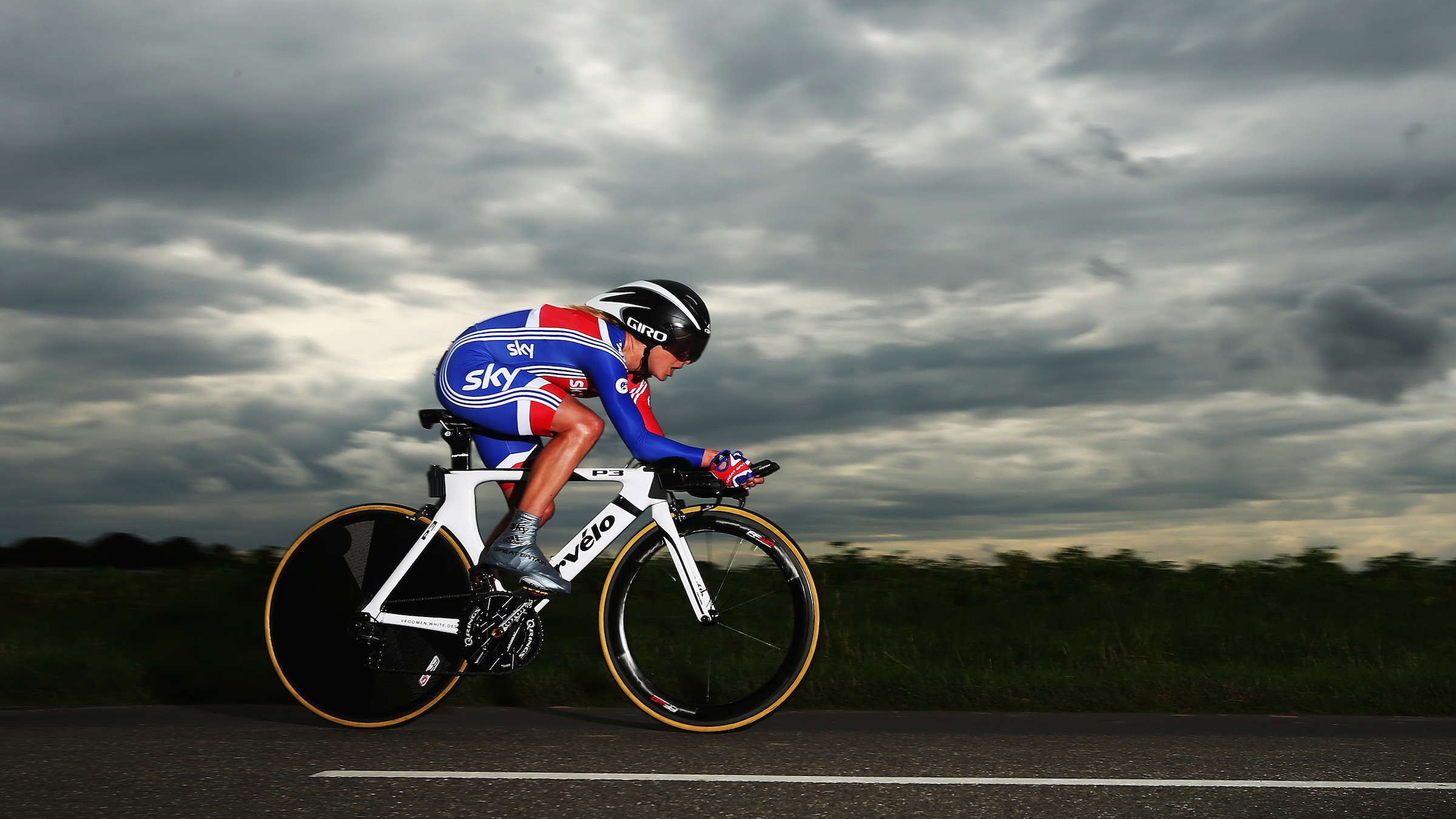Dispatch: Saddle Sore Tips From A Top Cyclist

Emma Pooley finished 4th in the Individual Time Trial at the UCI Road World Championships in 2012. (Photo: Bryn Lennon/Getty Images)
Saddle sores. At some point, we’ve probably all had them–tiny spots of torment that can turn any normally pleasurable ride into a nightmare experience. As someone who recently borrowed a friend’s bike (and an unfamiliar saddle) for three days of back-to-back riding at a triathlon training camp, let’s just say the issue of saddle sores is front and center for me. So I reached out to the most experienced female cyclists I know to get her advice on the subject–how to avoid the little buggers to begin with, and what to do once you’re stuck with one.
Emma Pooley, who I met at the inaugural Challenge Philippines, is a pro triathlete on the side. Her full-time gig is as a professional cyclist, and a darn good one at that. Pooley’s collection of titles includes Olympic silver medalist (2008) and World Time Trial Champion (2010). But she’s no slacker in the world of multisport, either; thus far she’s won the Swissman Extreme Triathlon (2013), placed fifth at Ironman Zurich (2013) and third at Challenge Philippines (2014). Along with her impressive cycling resume, Pooley also hails from the UK–thus I knew she’d have just the right style of “humour” and straight talk to give me the skinny on saddle sores.
“I think most people who regularly do a lot of hours on the bike will now and then get a saddle sore. It’s simply not a part of one’s anatomy that is suited to having high pressure inflicted on a small surface area for long periods of time. Add in heat, sweat, hair, bacteria…well, something is bound to go wrong sometime!”
Sore in the Saddle or a Saddle Sore?
“The trick is avoidance as far as possible, and good management if you do get a sore. I think it’s useful to distinguish between being saddle sore (i.e. having a sore backside from sitting on your saddle for longer than you’re used to, a problem you can avoid through good shorts, the correct saddle and getting used to it) and having a saddle sore (i.e. a local skin infection in the saddle area),” she said.
“I’d also say that the occasional saddle sore is bearable, but if you regularly get widespread chafing or pressure on the sensitive bits of your anatomy that can least bear it, you are probably on the wrong saddle for you, speaking from experience! I remember when I started cycling I absolutely hated it–it was purely a method of getting some exercise during the winter when I was injured from running—and I bloody hated it because I had this terrible saddle that gave me trouble. The right saddle is absolutely crucial and it’s a very personal choice. What’s right for one person’s backside is not necessarily right for another’s. We all have different shaped anatomy!” said Pooley, who now rides an SMP on her road bike and an Adamo on her TT bike.
RELATED: Sore Subject: Are You Riding The Wrong Saddle?
Tips to Avoid Saddle Sores
Along with finding the right saddle for you–which may take some trial and error testing–Pooley recommends these basic tips to avoid saddle sores:
- Always wear clean shorts. (Good advice generally too.)
- Take your shorts off as soon as you get home and wash yourself. “It’s fairly obvious stuff,” said Pooley, “but probably worth repeating!”
- Invest in quality shorts with a true cycling chamois. “I rarely train in my tri kit,” she said.
- Don’t go crazy with chamois cream. “I’m very skeptical of chamois cream, especially when people put it on like with a spade!” said Pooley. “I think if you’ve got good shorts and the right saddle, you don’t need to use heaps and heaps of chamois cream. But some of them are anti-bacterial which can be quite good, so use just a bit.”
- “If you get any sort of chafing problems because something rubs, there are some really good anti-chafing gels out there as well. Lanacane is excellent, or you can use a barrier cream.” (Pooley suggests Silic15, available in the UK and Australia, but the active ingredient dimethicone is found in many products designed to prevent diaper rash and bed sores.)
Treat That Sore Spot
If you end up with a saddle sore despite your best efforts to avoid one, a few simple treatments can help ease the suffering. “If you do get a saddle sore, treat it like a local skin infection or a spot, with gentle antibiotic or antiseptic cream. Ice can also be useful to help ease any swelling. It’s not the most pleasant feeling to lie around with ice on your saddle sore, and you have to be careful to put the ice in a sock or a tea towel or something–you’ll do serious damage if you put it directly on the spot–but it really does help,” Pooley explains.
And if the sore turns from a small trouble spot to a point of pure torture, seek professional help and perhaps a prescription local or oral antibiotic. “If it’s really bad, then try to go to a cycling-specific doctor or one that at least rides a bike,” suggests Pooley. “I’ve been to the doctor with saddle sores when they’ve been really bad, and the problem is a regular general practitioner will look on in horror and say, ‘Well stop riding your bike!’”